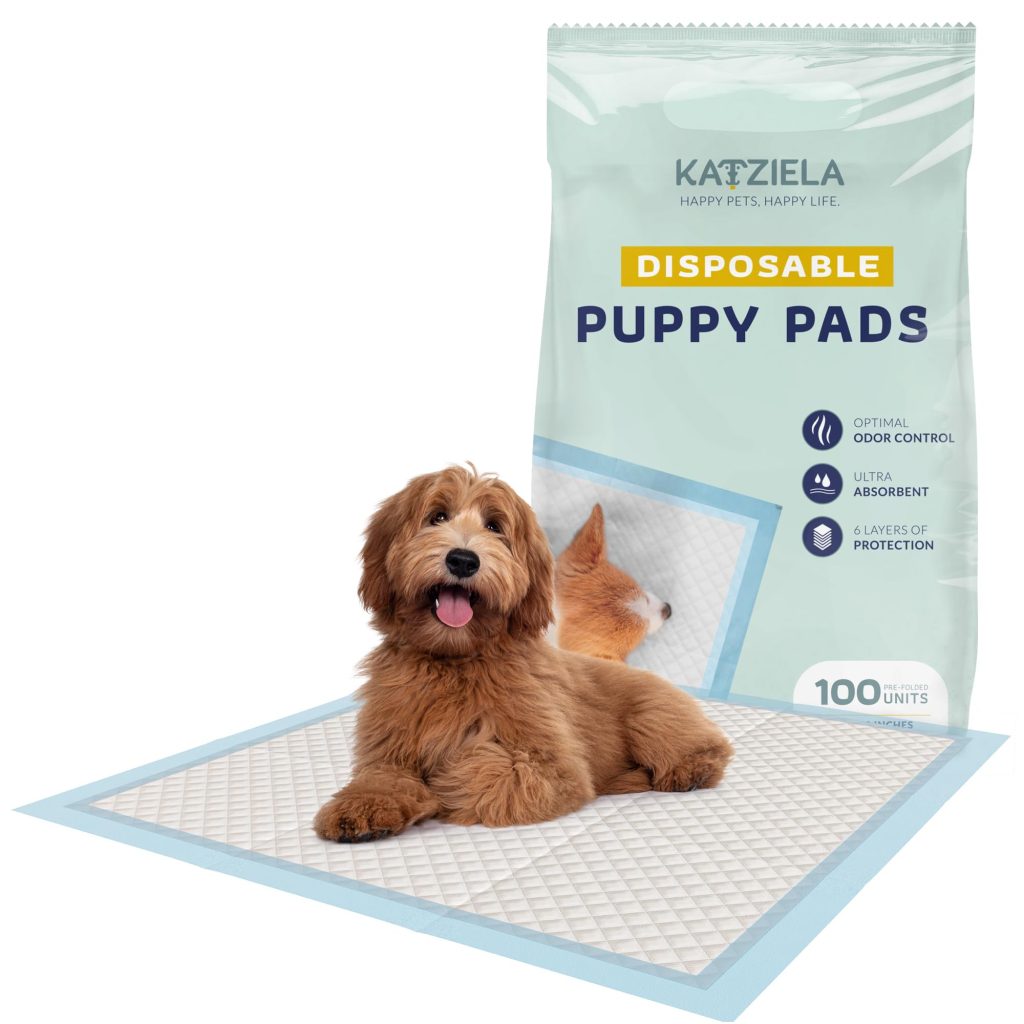Canine Nutrition Myths – Debunking Common Misconceptions

The intricate web of canine nutrition is one that remarkably parallels human dietary requirements, albeit with unique twists that cater specifically to our four-legged companions. Understanding the nutritional needs of dogs begins with recognizing their status as omnivores; while they have ancestral roots as carnivores, domesticated dogs thrive on a varied diet. This diversity is not simply a matter of preference but is essential for their overall health.
Central to a balanced diet is a mix of proteins, fats, carbohydrates, vitamins, and minerals, each playing a pivotal role in maintaining a dog’s vitality. Proteins are the building blocks of life; they are necessary for growth, muscle development, and tissue repair. High-quality protein sources, such as lean meats, fish, and eggs, should be prioritized, ensuring that the amino acids essential for a dog’s health are abundant in their meals.
Equally important are fats, which serve as an excellent energy source and facilitate the absorption of fat-soluble vitamins like A, D, E, and K. Incorporating healthy fats, such as omega-3 and omega-6 fatty acids found in fish oil and flaxseed, not only helps in maintaining a glossy coat but also supports cognitive function and immune response.
Moreover, carbohydrates often get a bad rap, yet they’re crucial for providing the energy dogs need for their daily activities. The key lies in opting for whole grain sources, legumes, or root vegetables that offer necessary fiber, promoting healthy digestion and stable blood sugar levels. An assortment of antioxidants derived from fruits and vegetables can bolster the immune system, safeguarding against a plethora of illnesses.
As diligent pet parents, being attuned to the specific needs of your dog is paramount. This necessitates an understanding of factors such as age, size, breed, and activity level, as each contributes significantly to dietary requirements. For instance, growing puppies require higher proportions of protein and fat to support their rapid development, while senior dogs benefit from diets that are lower in calories but enriched with joint-supporting nutrients like glucosamine and chondroitin. Adhering to age-appropriate feeding guidelines ensures a dynamic adaptation to the changing needs of your canine companion.
“You can judge a man’s character by the way he treats his dog.” – Parker Young
This maxim underscores the philosophy of responsible pet ownership, which extends to the commitment of nourishing your canine companion with diligence and care. Observing your dog’s physique, behavior, and energy levels can provide insightful clues about their nutritional state; a glossy coat, lively demeanor, and consistent energy often signal a well-balanced diet, whereas lethargy or a lackluster appearance may warrant adjustments to their food intake.
Engaging with veterinary professionals is another critical component in ensuring that canine nutritional needs are met effectively. Regular check-ups allow for the evaluation of dietary efficacy, addressing any specific health concerns that might arise, such as allergies or behavioral issues stemming from inadequate nutrition. This collaborative approach ensures that your decisions are informed and tailored to the specific wellness objectives of your dog.
Ultimately, fostering an enriching and health-conscious environment for your dog goes hand-in-hand with understanding their dietary requirements. When you combine balanced nutrition with adequate exercise and emotional enrichment, you are not just feeding your dog; you are nurturing the profound bond of companionship that defines the human-dog relationship.
Common Myths About Dog Food
There exists a myriad of misconceptions surrounding canine nutrition that can lead well-meaning pet owners astray, often causing more harm than good. Among these prevalent myths is the notion that all commercially available dog foods are equal and that any brand will suffice for a dog’s dietary needs. In reality, the quality and composition of dog food can vary significantly, and what may work for one dog could be detrimental to another. It is essential to discern between the myriad of offerings, particularly when marketing claims can be misleading, capitalizing on the emotional connections owners have with their pets.
Another common fallacy is the belief that dogs can subsist primarily on a meat-based diet, reflecting their carnivorous ancestry. While it’s true that meat is an important source of protein, dogs thrive on a well-rounded diet that includes a spectrum of nutrients. Omitting vital food groups such as grains, fruits, and vegetables can yield deficiencies in essential vitamins and minerals. Thus, it is critical to approach canine nutrition from a holistic perspective, aiming for balance rather than an overemphasis on one food category.
It’s also worth addressing the misconception that a shiny coat and good health are solely indicators of a well-balanced diet. While these physical traits can signal wellness, they do not always tell the whole story. A dog may appear healthy yet still suffer from nutritional deficiencies that are not readily observable. Regular veterinary assessments, combined with a thoughtful approach to diet and lifestyle, allow for a more nuanced understanding of a dog’s health status and nutritional needs.
Additionally, many pet owners mistakenly believe that table scraps or home-cooked meals are superior to commercial dog food. While sharing the occasional safe human food can be a delightful treat, it very important to recognize that not all human foods are compatible with a dog’s digestive system. Foods that may be safe for human consumption could pose significant risks for dogs, such as onions, garlic, and chocolate. Consequently, pet parents should carefully curate any homemade diets and consider consulting with a veterinary nutritionist to ensure that home-prepared meals are nutritionally adequate and balanced.
Another pervasive myth revolves around the perception that grain-free diets are inherently better for all dogs. While some dogs may have specific grain sensitivities or allergies, declaring grains as universally harmful is misleading. Whole grains can provide beneficial fibers and energy, and eliminating them unnecessarily might hinder a dog’s health. This distinction becomes ever more crucial as some grain-free diets have been linked to health issues, including canine dilated cardiomyopathy (DCM), prompting further scrutiny and discussion within the pet community.
Moreover, there’s a widespread assumption that feeding dogs is a one-size-fits-all scenario, often ignoring individual variations in breed, age, size, and metabolic needs. Each dog carries unique genetic traits that could influence their dietary requirements. For instance, a high-energy working breed may require a different caloric intake and level of protein compared to a couch-loving companion. Therefore, tailoring a dog’s diet to address their specific lifestyle, health objectives, and even age-related needs can significantly enhance their quality of life.
Encouragingly, due to the increasing awareness of pet nutrition, greater emphasis is now placed on reading ingredient labels and understanding the components of dog food. Engaging in this practice not only empowers pet parents but also nurtures trust between owners and the dietary choices they make for their dogs. As you delve into the ingredients, look for transparency in sourcing and the integrity of the components being used—fresh, whole food ingredients can make all the difference.
As one wise adage reminds us, “You are what you eat.” This sentiment rings particularly true for our canine companions, as the food they consume lays the foundation for their health, happiness, and overall well-being. It is, therefore, imperative that we, as devoted pet parents, approach canine nutrition with due diligence, awareness, and adaptability, ensuring that our furry friends lead vibrant and fulfilling lives.
The Role of Protein and Carbohydrates
Protein and carbohydrates serve distinct yet complementary roles in a dog’s diet, and understanding these roles can significantly enhance our guardianship of their health and vitality. Proteins, composed of amino acids, are crucial for nearly every bodily function, from the development of muscles and tissues to the production of enzymes and hormones. In the realm of canine nutrition, protein sources can vary greatly, each bringing its own unique nutrient profile. For instance, while chicken and beef are commonly relied upon, the inclusion of fish not only diversifies your dog’s diet but also provides omega fatty acids, which contribute to a healthy coat and skin. Similarly, plant-based proteins, such as lentils and chickpeas, can serve as excellent supplements, particularly for dogs with specific dietary needs or allergies.
As for carbohydrates, their reputation often suffers from misunderstanding; many perceive them solely as a source of empty calories. In reality, high-quality carbohydrates, derived from whole grains like brown rice, oats, or sweet potatoes, provide a sustained energy source essential for your dog’s active lifestyle. The body breaks down carbohydrates into glucose, which fuels locomotion, cognitive function, and overall metabolic processes. Moreover, the fiber content in many carbohydrate sources aids in digestion, ensuring that your dog’s gastrointestinal tract remains healthy and efficient. For instance, the inclusion of pumpkin or beet pulp not only enhances digestive health but also contributes vital nutrients, offering a wealth of benefits beyond mere energy provision.
But nutritional balance extends beyond simply ensuring sufficient quantities of protein and carbohydrates. The relationship between these two macronutrients is critically dynamic; adequate carbohydrate intake can enhance protein utilization within the body. When a dog’s diet provides sufficient carbs, the body can focus protein use on essential functions like muscle repair rather than as a primary energy source. Therefore, striking a balance between these elements is paramount to optimizing your dog’s overall health.
When observing and evaluating your dog’s dietary needs, ponder their level of activity, breed characteristics, and any health-related issues they may face. For working dogs or those engaged in regular physical activities, a higher protein intake may be required to support muscle maintenance and energy expenditure. In contrast, dogs leading a more sedentary lifestyle will benefit from a less protein-dense diet, as excess protein can contribute to unintended weight gain and associated health risks.
As we embark on the journey of canine nutrition, it’s critical to remember that every dog is an individual with unique nutritional needs. This personalized approach can be reinforced by using insights from scientific research, veterinary guidance, and an understanding of your dog’s personal preferences. Always remain attentive to how your dog’s body reacts to different dietary changes; this feedback loop offers valuable insights that contribute to their ongoing health and happiness.
In daily practice, think integrating a variety of protein and carbohydrate sources into your dog’s meals, allowing not only for balanced nutrition but also for a satisfying dining experience. Engaging in meal preparation with nutritional awareness fosters a deeper connection between you and your dog, echoing the idea that what we feed them is not merely sustenance but an expression of our care. Perhaps if one embraces the culinary creativity that comes with pet parenting, mealtime can transform into a delightful interplay of flavors, textures, and health benefits, all catered to the needs of your cherished companion.
Interpreting Ingredients and Labels
Navigating the abyss of dog food labels can initially feel overwhelming, yet it unveils a wealth of knowledge that fosters a deeper connection between you and your canine friend. The key to deciphering these ingredients lies in vigilance, education, and a bit of detective work. When examining the packaging of commercial dog foods, it very important to start with the ingredient list, as it provides insight into the quality and sources of nutrients included in the diet.
Ingredients are typically listed in descending order by weight, so the first few items hold the most significance in determining the primary components of the food. A quality dog food should prominently feature whole, identified sources of protein at the top of the list. Look for ingredients such as “chicken,” “lamb,” or “salmon” rather than vague terms like “meat meal” or “animal by-products.” Choosing options with whole meats and recognizable food items not only enhances the nutritional value but also ensures that your dog is receiving a diet this is both wholesome and palatable.
Furthermore, the inclusion of whole grains or digestible carbohydrates is vital in supporting a dog’s energy needs, digestive health, and overall wellness. Research has long suggested that ingredients such as brown rice, oats, and sweet potatoes can serve as excellent sources of dietary fiber, which is instrumental in promoting healthy digestion. However, an informed pet parent should also be cautious of the type and quality of grains; while whole grains are beneficial, fillers or low-quality grains should be avoided, as they can lead to gastrointestinal distress or minimal nutrient absorption.
As your gaze traverses the label, take note of the presence of preservatives, artificial flavors, and colors, which often serve no nutritional purpose and can adversely affect your dog’s health. Instead, opt for products that utilize natural preservatives, such as tocopherols (vitamin E) or ascorbic acid (vitamin C), which can maintain freshness without compromising the integrity of the diet. Diets devoid of unnecessary additives align more closely with the principles of a holistic approach toward nutrition.
Moreover, understanding the nutrient composition as a whole, including guaranteed analysis, can illuminate the balance of proteins, fats, and carbohydrates in the kibble. This section of the label outlines the percentages of crude protein, crude fat, fiber, and moisture. A well-rounded food should provide adequate protein levels—typically between 18% to 30% depending on age, activity level, and specific breed requirements—combined with balanced fat content for energy enhancement. Monitoring these values allows pet parents to align their dog’s nutritional needs with appropriate dietary choices.
The term “complete and balanced” is often displayed prominently on dog food labels. This phrase signifies that the food adheres to standards set by organizations such as the Association of American Feed Control Officials (AAFCO). However, it’s merely a starting point; not all brands achieve the same level of quality and effectiveness within these standards. Engaging further with the brand’s sourcing practices, the processing methods utilized, and individual ingredient profiles invites an informed dialogue about the food your dog consumes on a daily basis.
Realistically, translating ingredient lists into actionable insights requires time, research, and occasionally, guidance. Veterinary nutritionists can play an indispensable role in this journey, offering tailored recommendations and interpretations that suit the specific needs of your dog. Regular consultations promote a proactive relationship with your dog’s dietary management, ensuring that their meals are not only nourishing but also enjoyable.
As you embark on the quest for optimal canine nutrition, remember that the choices you make at the pet store resonate far beyond the bowl on the floor. Each selection reflects a commitment to your dog’s health and happiness. Engage in this exploration wholeheartedly, for through your efforts to understand the intricacies of dog food labels, you empower your furry companion not just to thrive but to revel in the gift of a truly enriched life.







